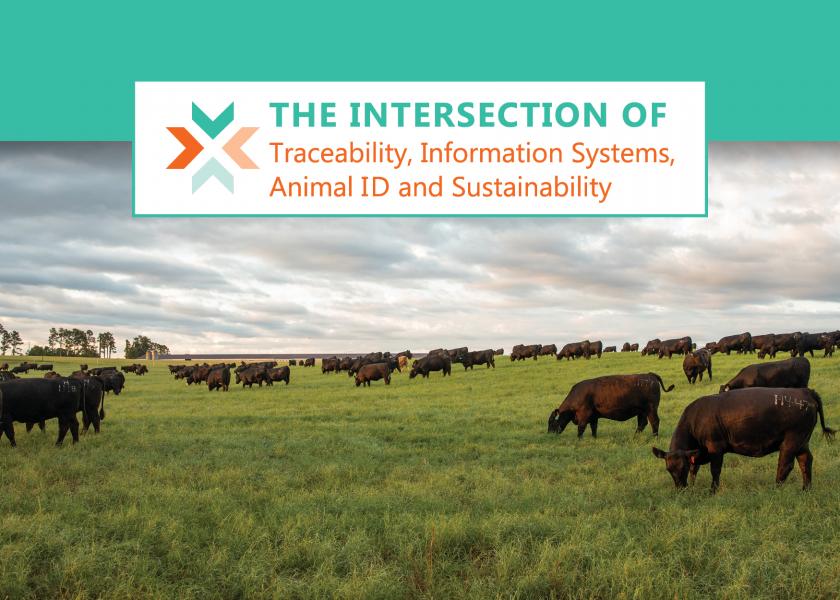It Starts With Animal ID

In the late 1980s, a livestock identification company had a “major product launch” for a marking pen. The ink would penetrate into the plastic tag, making the ID number “more permanent.” Prior to that, producers used Marks-A-Lots and Sharpies that lasted, maybe, for a year.
Fast forward through marking foils, inkjet and laser marking, the industry finally had tools to become proficient at animal ID. Market conditions, particularly BSE in the United Kingdom and Europe, and the move toward full traceability in those markets, accelerated this evolution.
Laser-engraved barcodes were the first step toward automated ID, and then Radio Frequency Identification (RFID) took it one step further. National systems in Australia and Canada made RFID a cornerstone technology, and producers came face-to-face with a technology that begged the question, “What else can I do with this?”
By incorporating complimentary technologies, producers have streamlined several tasks, created value and gained efficiencies for their operations using RFID.
That’s not to say it’s all about ID technology and proficiency — it is not. Data, more specifically, actionable data, emerged as did systems to house this data, find correlations and optimize value. Age, source and attribute-verified systems allowed producers to produce what the market was asking for, and to get paid a premium for doing so.
The underlying technology, RFID, continued to evolve to meet producer’s wants and needs, and the evolution will continue, perhaps toward retinal, facial and body scanning.
Proficiency is not a goal to be reached; it is an aspirational state that demands we make the most of technologies. It has not only allowed us to identify and trace animals, but now, using accelerometers, temperature sensors, ultrasound measurements and genomic test data, we know more about the well-being of the animals in our care and how to enhance health and value.
As we optimize production systems on our farms, we still grapple with the value of using the underlying tools to monitor and manage disease in the U.S.
In the 1990s, the Livestock Conservation Institute (predecessor to the National Institute for Animal Agriculture) established its first ID committee, which attracted a group eager to learn how to use emerging technology. We’ve watched other nations build traceability systems, and then use our lack of such as a “non-tariff trade barrier.”
Today, we still struggle with “if” we want or need such a traceability system, and the answer remains in the hands of a divided industry. What is not in question is whether we have the capability to have such a system, we absolutely do, and we are capable of using the core technologies to make it happen.
In the end, it’s about optimizing every element of our industry to benefit consumers, producers and the animals in our care.
Identification might seem small, but you cannot optimize what you cannot manage, you cannot manage what you cannot measure and you cannot measure what you cannot identify.
Today, we can do all of this — and that’s true proficiency and sustainability. We’re only getting started, and through continued innovation, we’re only getting better.
Glenn Fischer serves as a co-chair for the NIAA Animal Identification and Information Systems Council







